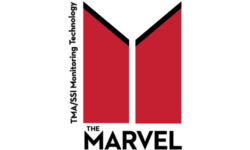ONVIF Tackles the Need for Standardization

(l-r) Axis Communications Security Industry Liaison Steve Surfaro, Anixter Technical Director of Security Matt Powers, Setracon President Jeff Slotnick, ONVIF Steering Committee Chairman Per Björkdahl and SSI Editor-in-Chief Scott Goldfine discuss the importance of interoperability at ISC West.
LAS VEGAS — Last week at the ISC West conference, the Open Network Video Interface Network (ONVIF) hosted a panel discussion to shed light on its latest profiles, stress the importance of industry interoperability standards, as well put an end to the misconceptions with specifications reported by installers and end users.
Moderated by Scott Goldfine, editor-in-chief of SECURITY SALES & INTEGRATION, the four-person panel included Per Björkdahl, chairman of ONVIF’s Steering Committee, Steve Surfaro, security industry liaison at Axis Communications, Matt Powers, technical director of security solutions for Anixter, and Jeffrey Slotnick, CPP, PSP, president of security consulting firm Setracon.
At the start of the discussion, Björkdahl noted that since its launch five years ago, the organization has gained more than 400 members, as well in excess of 3,000 ONVIF-conformant products. Additionally, he summarized ONVIF’s three profile initiatives including:
- Profile S — describes the common functionalities shared by ONVIF conformant video management systems (VMS), which is scheduled to be released in June 2013
- Profile G — addresses reporting and storage functionalities, and has a scheduled release date for the second half of 2013
- Profile C — encompasses access control and video integration, and will be released at the end of the year.
“The Profile concept makes it easy to determine compatibility between products,” Björkdahl explained to the crowd. “It allows end users to identify specific and proper features and it’s a simple and clear concept. I think we have a lot to gain by removing the technical obstacles and creating standards for the very basics of our products.”
Slotnick agreed, noting that specifying interoperability standards makes an installing job easier from both the integrator and consultant perspective. He also pointed out how the security industry can look to the printer industry as a model for standards development. Slotnick explained that eight years ago, users had to install proprietary software onto their computers for printers to operate. Thanks to standardization, today’s printers can be plugged into a USB port and a computer can recognize the device immediately.
“I think if we start looking at that model as a standard and a requirement, as we move forward in our industry, I think we can drive some real change,” he said. “Collaboration, in my opinion, is a must. We’ve got to get away from proprietary.”
But what about those suppliers and integrators that are proprietary diehards? What is ONVIF doing to win those individuals over? For Powers, it’s imperative that manufacturers and integrators alike realize that each end user has specific needs; not everything is one-size-fits-all. Additionally, he mentioned that after an integrator sells a solution to an end user, the electronic security contractor must perform acceptance testing before deploying it at a customer’s site, which can cost time and money.
“If you look at it from that standpoint, standards ease product development and they increase innovation,” he explained. “It reduces the cost of design and testing. From a standards perspective, the idea is that an integrator can take products and solutions to the customer site, do that deployment there, and reduce costs in that process. I think those are some key things that will hopefully increase the acceptance of ONVIF.”
The panel also addressed how interoperability plays into the latest industry trends including physical security information management (PSIM), situational awareness and Big Data.
“The reality is there are a lot of solutions out there that can be categorized as PSIM, but I really want this industry to expand, as ONVIF is allowing it to, to many other areas,” Surfaro said. “What we need to do is make it searchable, so ONVIF is solving the first problem in allowing all these devices to get connected to the network. The second problem is actually categorizing the information and making that searchable and allowing people to actually find the information they need.”
One of the common misconceptions of the ONVIF standard is that the specification does not cover every feature of every camera, leaving some end users and integrators to feel shortchanged. However, Björkdahl stated, if ONVIF was designed to incorporate all features of all cameras, it would hinder manufacturers to develop unique features for their products.
Surfaro concurred, noting that, in the end, it all boils down to meeting the needs of the end user.
“The most important perspective … is understanding that this is a business case, and it’s about the end user and the solutions we’re providing them,” he said. “Don’t get caught up in features. [ONVIF] is there to provide an easier, more cost-effective way of binding devices to solutions.”
Ashley Willis is associate editor for SECURITY SALES & INTEGRATION. She can be reached at (310) 533-2419.
If you enjoyed this article and want to receive more valuable industry content like this, click here to sign up for our FREE digital newsletters!

Security Is Our Business, Too
For professionals who recommend, buy and install all types of electronic security equipment, a free subscription to Commercial Integrator + Security Sales & Integration is like having a consultant on call. You’ll find an ideal balance of technology and business coverage, with installation tips and techniques for products and updates on how to add to your bottom line.
A FREE subscription to the top resource for security and integration industry will prove to be invaluable.













